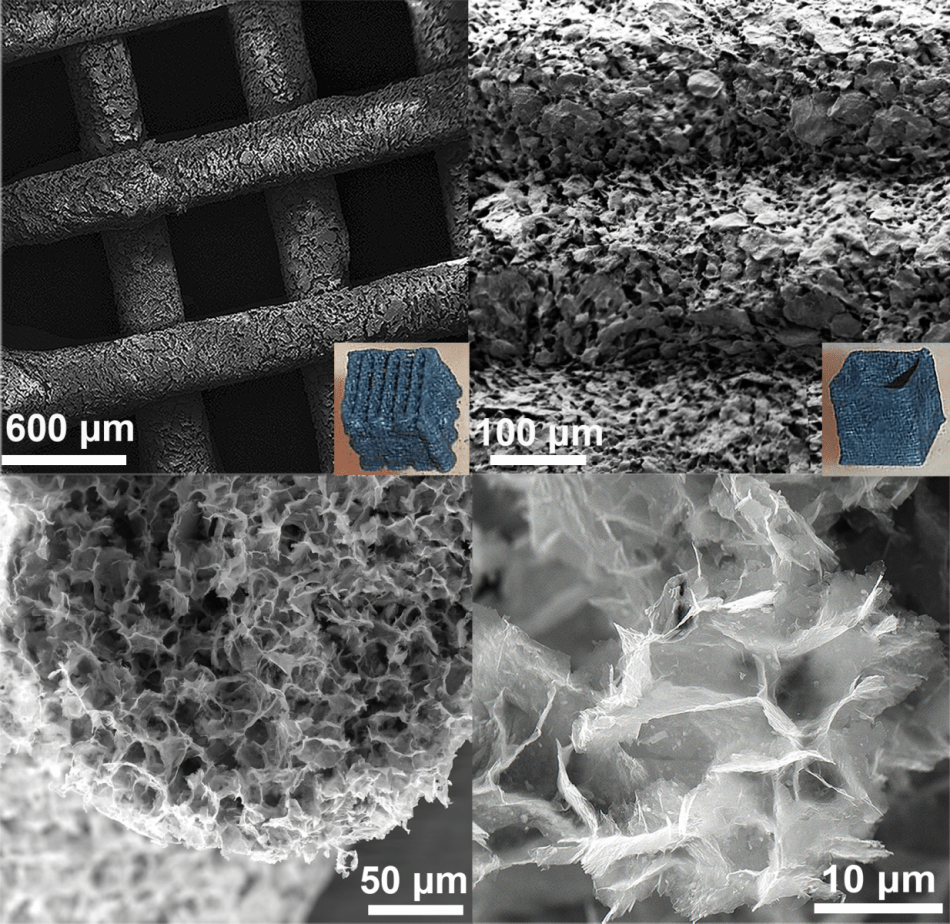Aug 1 2019
In a breakthrough study, researchers have developed inks using a two-dimensional (2D) material, called MXene, to create 3D-printed interdigitated electrodes.
 (Image credit: The University of Manchester)
(Image credit: The University of Manchester)
The researchers are from the School of Materials and the National Graphene Institute at The University of Manchester. As reported in Advanced Materials, these unique inks have been used for 3D printing electrodes that can be unutilized in energy storages devices, like supercapacitors.
MXene is a “clay-like” 2D material made up of carbon atoms and early transition metals (for example, titanium). It was initially created by Drexel University. Conversely, MXene is different from the majority of the clays and displays high electrical conductivity upon drying. It is also hydrophilic, which means it can be easily dispersed in inks and aqueous suspensions.
Graphene is known to be the world’s first 2D material. It is several times stronger than steel, more conductive than copper, transparent, flexible, and a million times thinner than the thickness of a human hair. Ever since its isolation, graphene has paved the way for studying other kinds of 2D materials, each with an array of different characteristics.
Conversely, in order to exploit these exceptional characteristics, 2D materials have to be efficiently incorporated into structures and devices. The materials’ formulations and the manufacturing method are important to achieve this.
We demonstrate that large MXene flakes spanning a few atoms thick, and water can be independently used to formulate inks with very specific viscoelastic behaviour for printing. These inks can be directly 3D-printed into freestanding architectures over 20 layers tall. Due to the excellent electrical conductivity of MXene, we can employ our inks to directly 3D print current collector-free supercapacitors.
Dr Suelen Barg, Study Lead, School of Materials, The University of Manchester
Dr Barg continued, “the unique rheological properties combined with the sustainability of the approach open many opportunities to explore, especially in energy storage and applications requiring the functional properties of 2D MXene in customized 3D architectures.”
According to Jae and Wenji, PhD students at the Nano3D Lab at the University, “additive manufacturing offers one possible method of building customised, multi-materials energy devices, demonstrating the capability to capture MXene’s potential for usage in energy applications. We hope this research will open avenues to fully unlock the potential of MXene for use in this field.”
The application and performance of these devices progressively depend on the development and scalable production of novel materials so as to improve their performance.
Supercapacitors are actually devices that are capable of producing huge amounts of power and, at the same time, use relatively less energy when compared to traditional devices. A great deal of work has been performed on the application of 2D materials in such types of devices and this can be attributed to their exceptional conductivity as well as their ability to reduce the device’s weight.
These devices could be used in the automotive sector, such as in electric cars and also in mobile phones and other electronics.
What is a graphene supercapacitor?
(Video credit: The University of Manchester)